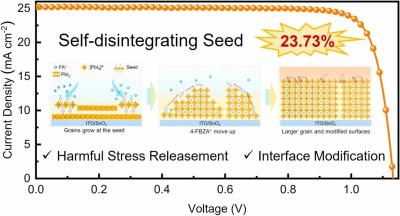Jinko Solar announces N-type TOPCon-based perovskite tandem solar cell with 33.24% efficiency
China-based global PV and ESS supplier, Jinko Solar, has announced a significant breakthrough in the development of its N-type TOPCon-based perovskite tandem solar cell.
Tested by the Shanghai Institute of Microsystem and Information Technology, the cell reportedly achieved an impressive conversion efficiency of 33.24%. This enhancement surpasses JinkoSolar's previous record of 32.33% for the same type of tandem cells.




